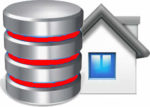An introduction to Perl for Biologists
Beginning Perl for Bioinformatics is a practical introduction to Perl for biologists with little or no programming experience. The good thing about Beginning Perl for Bioinformatics is that it brings together an introduction to Perl programming with hands on examples of how to use Perl to complete Bioinformatics tasks.
Beginning Perl for Bioinformatics covers the main programming sections of Perl including strings, loops, subroutines and regular expressions. Remaining chapters then discuss how to use Perl to manipulate genetic code such as reading protein files, concatenating DNA fragments, transcribing DNA to RNA and generating random DNA.
Separate chapters focus on Genbank, Protein Data Bank and BLAST. The Genbank chapter provides examples which show you how to separate annotations from sequence in Genbank files as well as how to parse the files and extract the data you require from Genbank files. The BLAST chapter shows you how to parse BLAST output and extract annotation and alignments using Perl, then you do whatever you want with the data like store it in a database or output the data in a different format. Protein Data Bank files are flat files and Beginning Perl for Bioinformatics describes with examples how to process PDB files and extract primary sequence and find atomic co-ordinates.
Beginning Perl for Bioinformatics is a great book for either bioinformaticians who want to learn Perl or for computer programmers who need to work with the Protein Data Bank, GenBank or BLAST files and you have chosen Perl as the programming language to use. The great thing about the book is that there are some good program examples that you can actually use yourself such as reading protein files or transcribing DNA to RNA.

